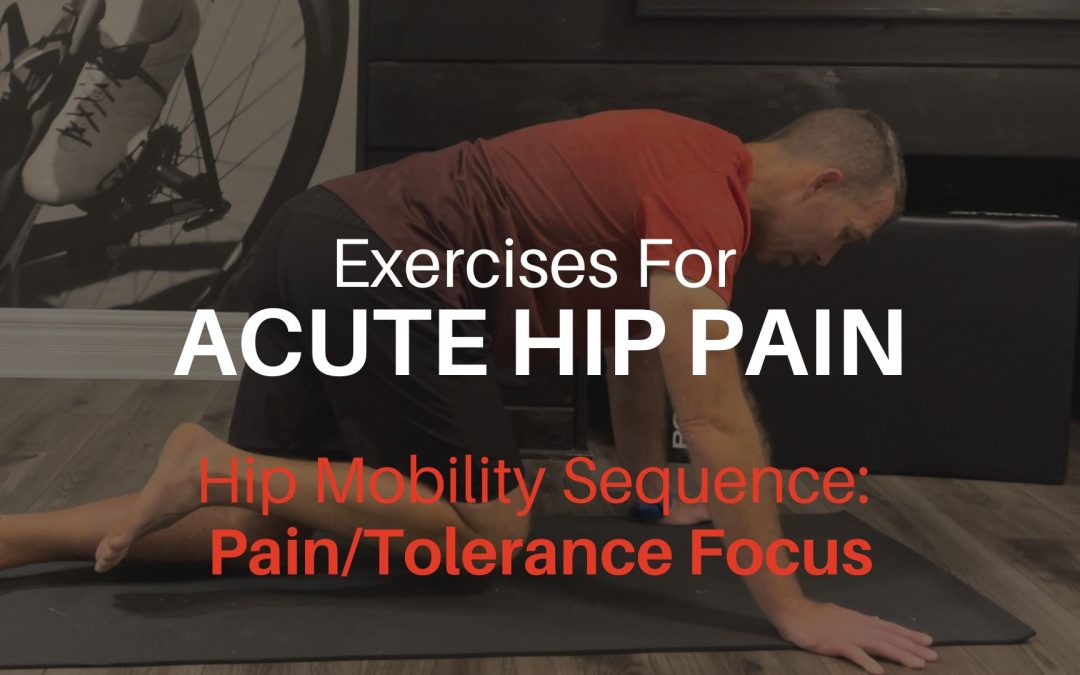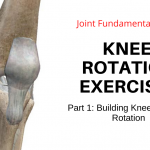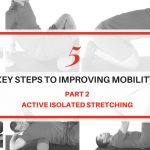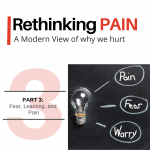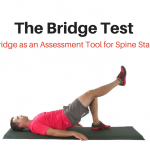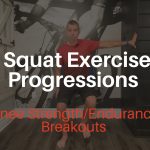When treating joint pain and dysfunction, the first priority is to develop tolerance to basic movements. So if we think about hip pain for example, if the hip can’t flex and extend, abduct and adduct, or rotate without hurting, that hip is going to have a lot of trouble doing basic hip things.
In other words, if we don’t have access to basic, fundamental hip motion, the hip is either going to hurt all day, or movement is going to be significantly altered as the brain has to find alternate movement strategies to avoid the painful movements.
So in this article I’m going to review our basic hip mobility movement sequence. This is the movement/exercise sequence that I use for a movement sensitive hip. These are the patients that when I assess basic hip ROM it provokes their symptoms. Here pain limits the full expression of hip motion.
Exercises For Acute Hip Pain
Now, let’s go over the movement/exercise routine itself. First, I will review the exercuises themselves. Then, we’ll wrap up the article by discussing programming and progression criteria.
And just as one last FYI, if you are a My Rehab Connection subscriber and you use our exercise prescription software, you can find this movement sequence in the Exercise Groups section under the title Basic Hip Mobility Sequence: Pain/Mobility Focus..
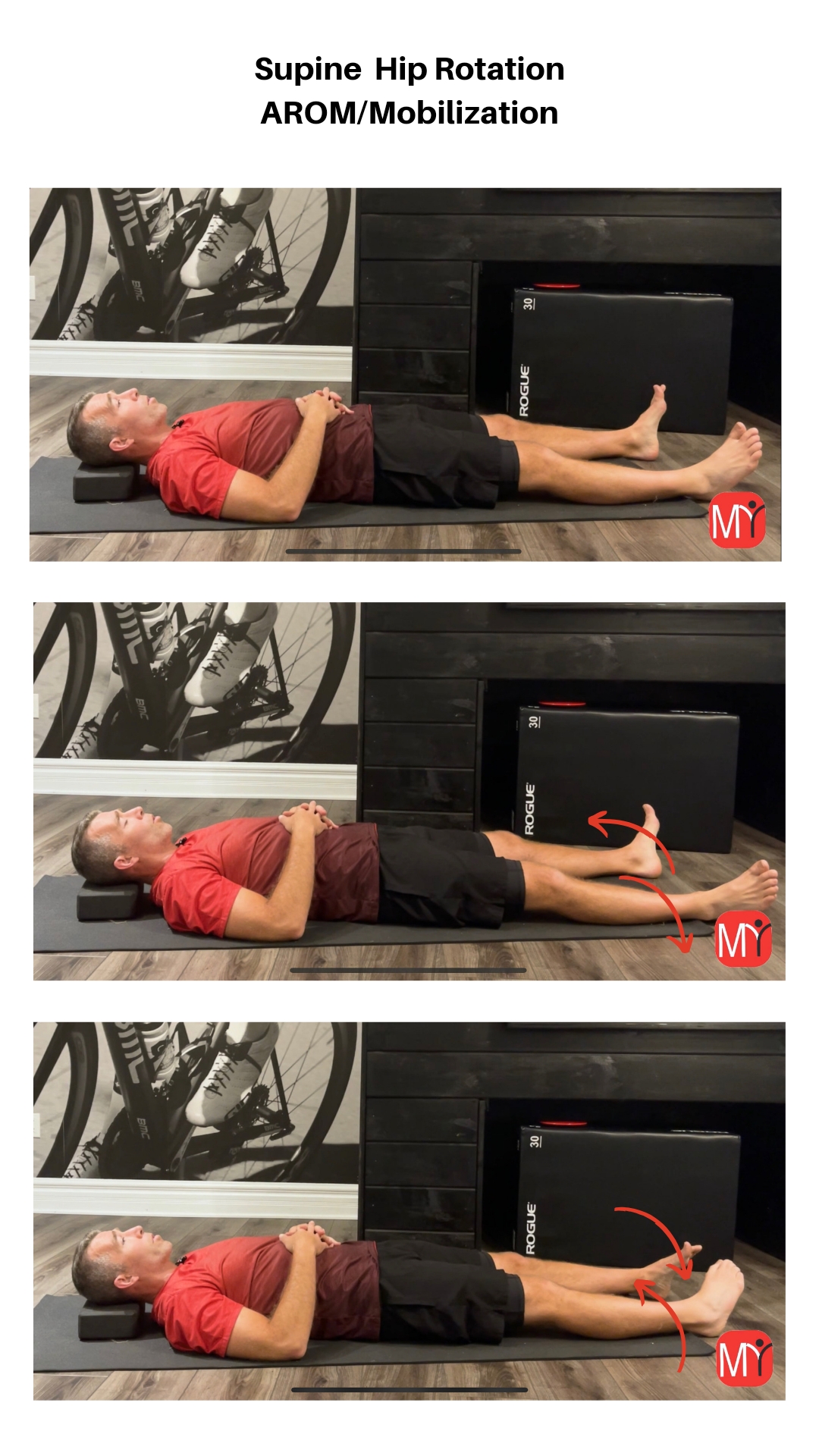
Supine Hip Rotation AROM/Mobilization: Pain/Tolerance Focus
Begin lying on your back with your legs fully extended. Slowly rotate your hips/legs outward.
Hold the outward for 1-2 seconds then rotate inwards.
Move as far as you can, but don’t force into pain – some mild, achy symptoms are OK but this motion should not cause pain.
Hold inward for 1-2 seconds then rotate outwards again.
Perform this back and forth motion 10 times. Repeat every few hours (4-5x/day).
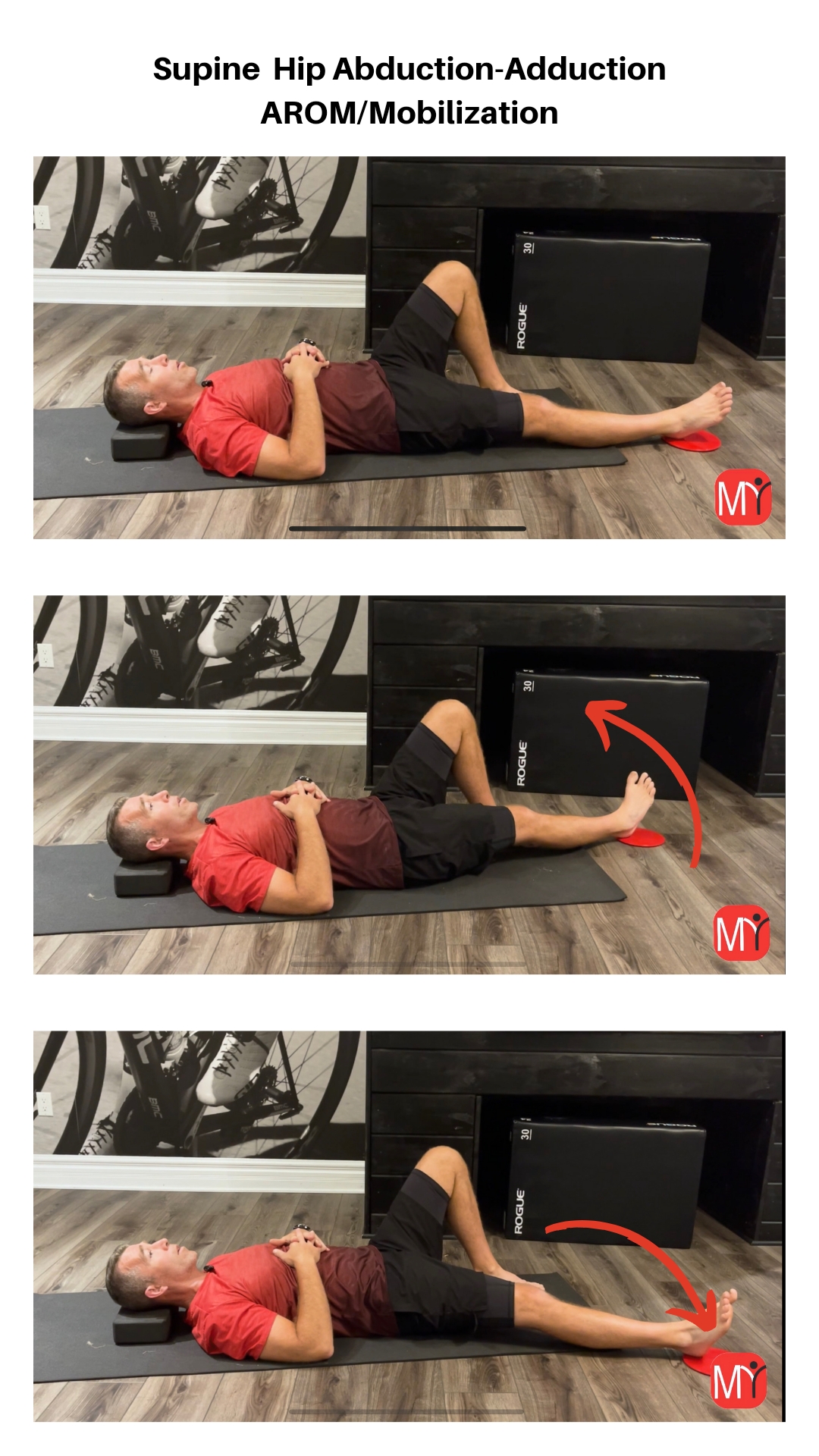
Supine Hip Abduction-Adduction AROM/Mobilization: Pain/Tolerance Focus
Begin lying on your back with your leg fully extended and the opposite knee bend with the foot flat on the floor.
Slowly slide your foot/leg out to the side. Focus on moving from your hip, as if you are pulling your leg up to your side using the muscles on the outside of your hip.
Hold the leg outward for 1-2 seconds then slide your foot/leg inward.
Move as far as you can, but don’t force into pain – some mild, achy symptoms are OK but this motion should not cause pain.
Perform this back and forth motion 10 times. Repeat every few hours (4-5x/day).

Quadruped Hip Rotation AROM/Mobilization: Pain/Tolerance Focus
Begin on your hands and knees with your thighs vertical and your knees directly under your hips.
Keeping the knee planted on the floor, turn your foot and lower leg in under your body. (NOTE – you will need to bend the knee to lift the foor over the opposite leg to allow the motion to occur.) Try to move just your thigh – do now allow your back or pelvis to twist. Focus on feeling the motion occur form your hip joint.
Hold for 1-2 seconds then turn your thigh so your foot/lower leg rotates out away from your body.
Move as far as you can, but don’t force into pain – some mild, achy symptoms are OK but this motion should not cause pain.
Perform this back and forth motion 10 times. Repeat every few hours (4-5x/day).
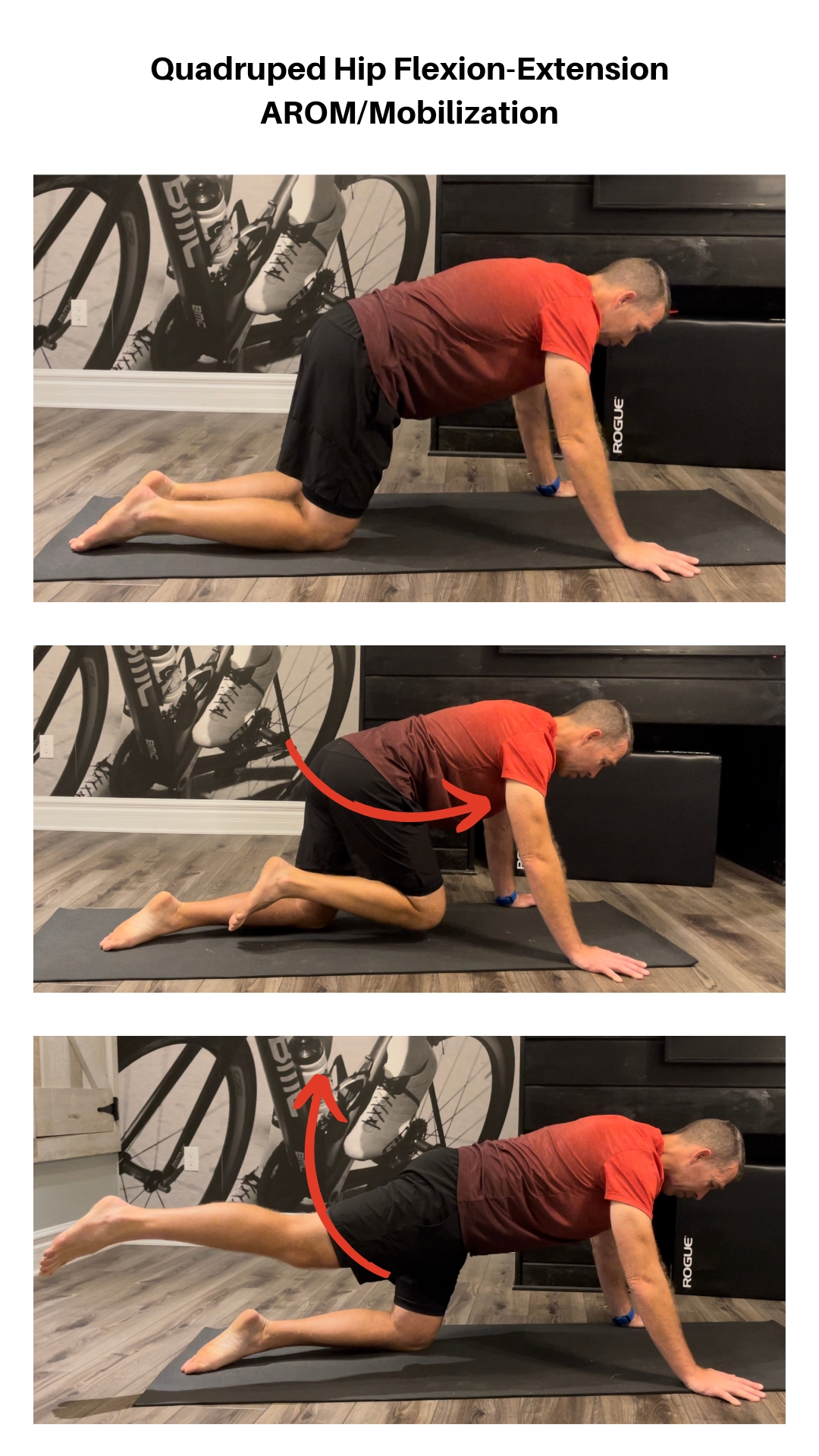
Quadruped Hip Flexion-Extension AROM/Mobilization: Pain/Tolerance Focus
Begin on your hands and knees. Now pull your knee/thigh up towards your chest. Try to keep your lower back stable. Focus on pulling your leg up using the deep muscles on the front of your hip.
Hold the leg up for 1-2 seconds then slowly pull your leg back behind your body.
Move as far as you can, but don’t force into pain – some mild, achy symptoms are OK but this motion should not cause pain.
Do not allow your lower back to arch.Focus on pulling your leg back using the muscles on the back of your hip.
Move as far as you can, but don’t force into pain – some mild, achy symptoms are OK but this motion should not cause pain.
Perform this back and forth motion 10 times. Repeat every few hours (4-5x/day).
Programming and Progression Criteria
Now that we’ve gone over the program itself, let’s go over programming and progression criteria
First, the key with these motions is to move to symptom tolerance. In other words, we want to move the hip as far as possible into each direction, but we don’t want to force the hip into painful positions.
Move to tolerance… This in not “no pain no gain”
The other thing to keep in mind here is that some patients will be very hesitant or even fearful of moving a painful hip, especially if some of these movements create or reproduce some symptoms.
Here it is helpful to point out to patients that these are all gentle non-weight bearing exercises. Which means any symptoms (at least if we are keeping the movements to symptom tolerance) will be a result of tissue inflammation or hyper-sensitivy as opposed to further tissue damage of injury.
Programming
As far as programming, the typical prescription is going to be to perform each of these movements for 10 slow, deliberate repetitions. And they’re going to repeat this sequence every few hours. So the idea here is to create a light, easy, controllable stimulus, but to provide this stimulus on a regular basis throughout the day.
Perform each movements for 10 slow, deliberate repetitions. Repeat this sequence every few hours (4-5x/day).
The other thing to point out here is that we like all 4 of these movements as a full routine as they cover all of the basic fundamental motions of the hip. But this doesn’t mean that we have to prescribe all 4 movements at once.
Depending on the patient and how sensitive the hip is, we can start with 1-2 of the movements and then add the other movements as their tolerance and their confidence and trust in the movements improve
Progression Criteria
Finally, let’s talk about progression criteria. Remember, the primary objective is to build and restore the tolerance to these basic, fundamental hip motions.
When pain/symptoms no longer limit ROM progress the patinet to a Joint Mobility/Control Focus
Here we’re looking for the point when the motion is no longer limited but symptoms and the patient is able to tolerate the end range positions. And just to clarify here, this doesn’t necessarily mean the motion has to be completely symptom free.
For example if the patient has some very mild sx but these symptoms are tolerable and do not limit the actual hip ROM, we are ready to progress the exercises.
Typically, this would involve transitioning the exercises and movement routine from a pain/tolerance focus, to concentrate more on hip mobility and control.

